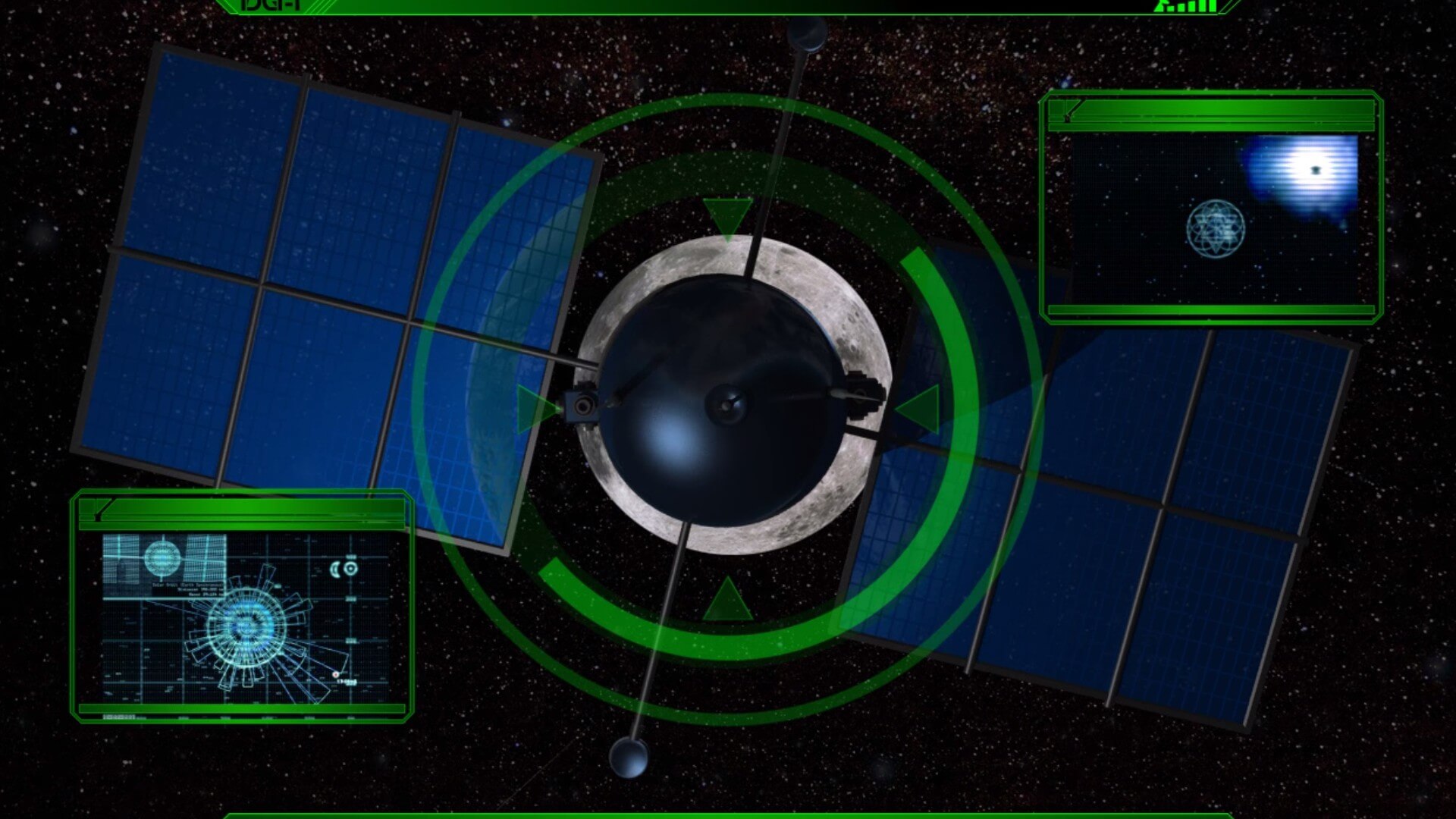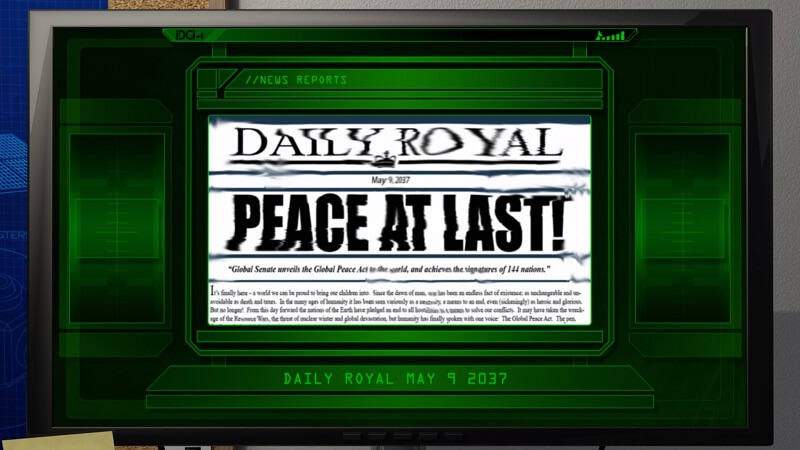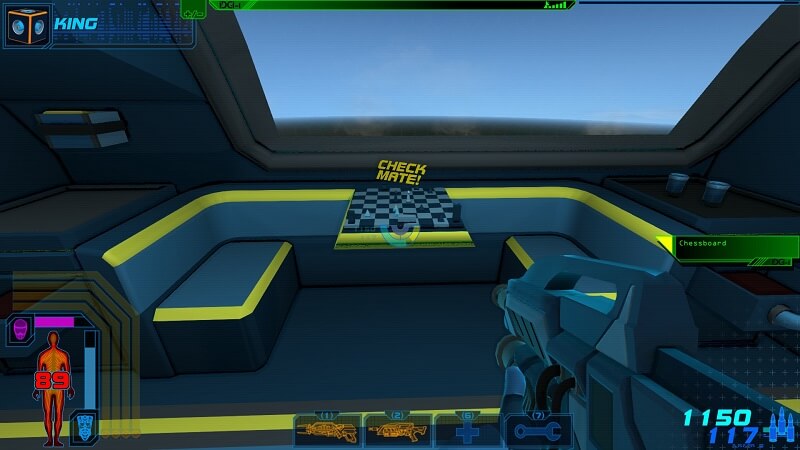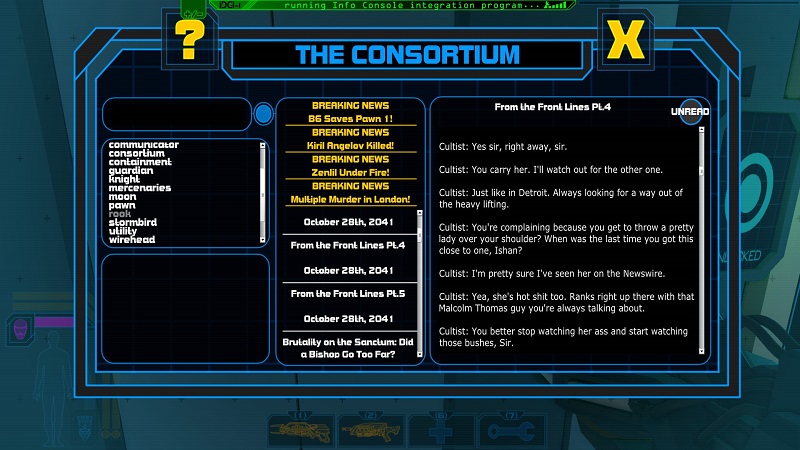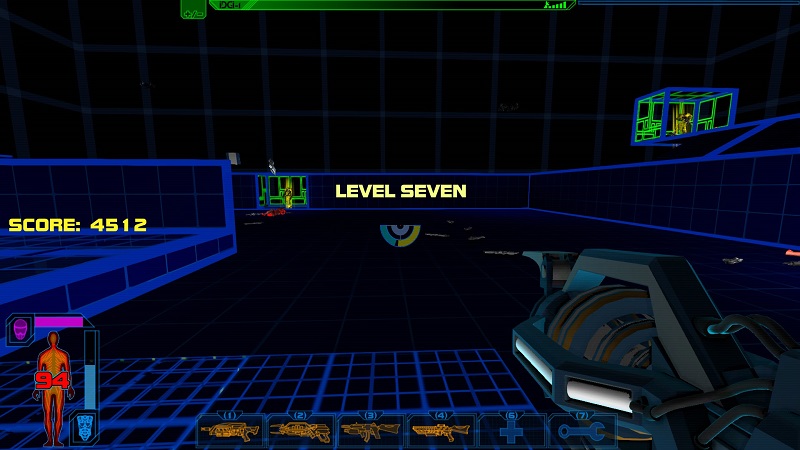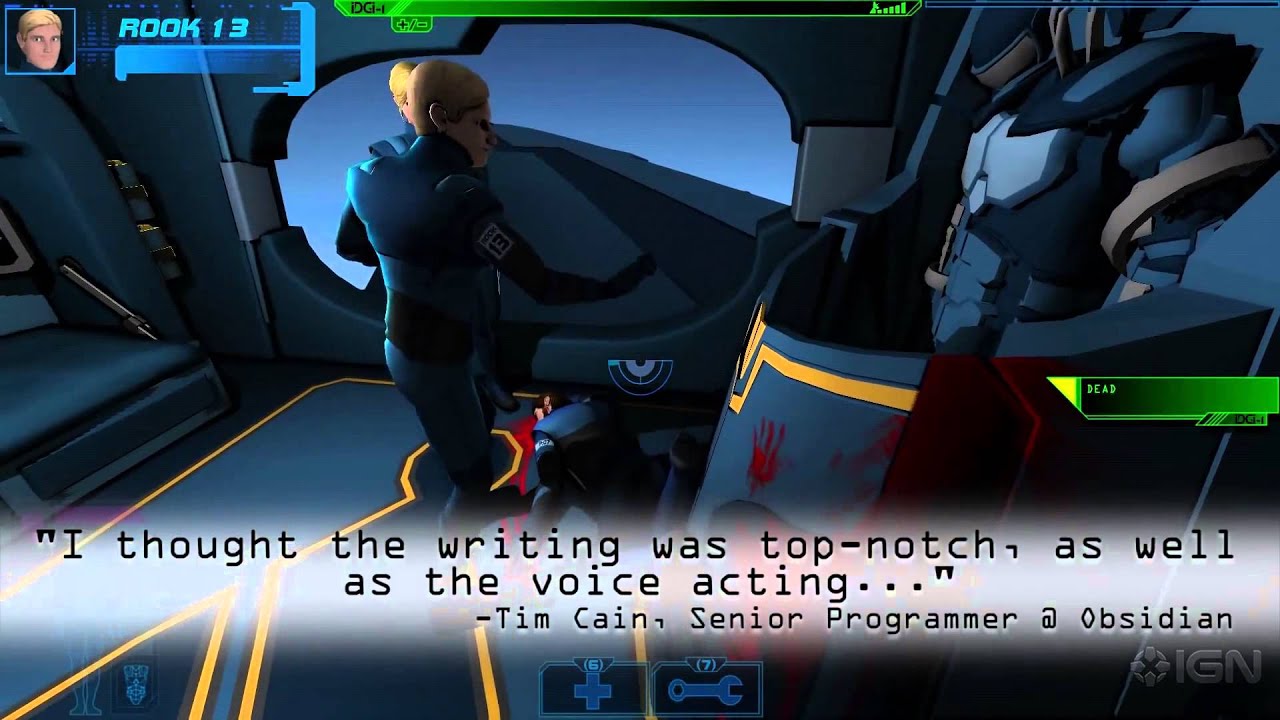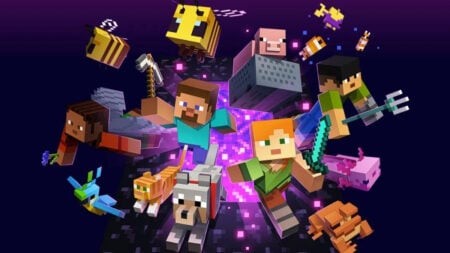Title: Consortium
Available On: Microsoft Windows
Publisher: Interdimensional Games Incorporated
Developer: Interdimensional Games Incorporated
Genre: RPG, FPS, Indie, Adventure
Official Site: Here
Release Date: January 8, 2014
Where To Buy It: Steam ($9.99)
What makes a video game successful? It’s not the action, equipment you can receive, graphics, or the number of times you can kill something, as that would get repetitive after a while (much like Destiny, where players were expected to collect “light” gear in order to level up. The result was quite the grind). Although these aspects of a game–especially an action one–are important to have, they will not matter if the story is terrible. Characters, and how they fit within the world that the developers have created, is a key component to having in any game, not just action games. Consortium, an Indie, RPG, action-adventure title, developed by Interdimensional Games Incorporated, is a prime example of how a polished story can make all the difference. Because if it weren’t for the solid plot, relatable characters, and surprisingly fun combat system, this game would most likely be crash landed in another dimension. Thankfully it isn’t.
The backdrop behind Consortium is simple to grasp, although some of the underlying themes may be a bit more confusing. Before you begin a new game, you are given information via a short video that explains what is about to happen. The short clip explains that our world has created a satellite which has the ability to send people to another dimension, where their actions have a direct impact on that world. This “other world” is a place of peace, where issues of food, water, and energy are all concerns of the past because of the Consortium, a global peacekeeping organization. As the player, you are given access to a Consortium agent’s body (always Bishop 6) from that world, so your decisions don’t only affect the world and how it unfolds around you, but the well-being of Bishop 6 as well.
The story revolves around a murder that has occurred on board the Zenlil, the aircraft that you’re transported to after starting the game. The Zenlil is one of the many strategic centers the Consortium uses for planning and executing missions around the world. Throughout the game, you’ll meet with various crew members in order to try and solve the murder; every interaction important for determining how the rest of the story ends up. This “create-your-own-adventure” style is unique and makes for a fun, replayable game. You’ll discover who the traitor is if you don’t your first playthrough, but only by making certain decisions. That’s the beauty of the writing behind Consortium: every single interaction has a separate reaction.
Another aspect of the story that is unique is the way crew members onboard are distinguished from other crew members. Each person is given a title based on their rank onboard the ship, but their titles all revolve around the game of chess. Your character is a Bishop, a combat specialist; the Rooks hold leadership positions in different specialties all around the ship; the Pawns are the lowest ranked individuals; the Knight is the captain of the ship; the Queen is the leader of all of the ships; and, well, the King… He’s something you wouldn’t really expect to be the leader of a powerful group of humans.
You don’t meet the King until one of the last scenes of the game, but his/her interaction with you is one of my favorites throughout the entirety of the short game. Almost like a movie, play, TV show, or any other outlet of entertainment that has the ability to break the fourth wall, so does Consortium. As Bishop 6, you go through the motions of trying to figure out this murder with no real idea of how your decisions on the matter may impact the future of the Consortium and the Zenlil. But once you meet the King, realizing that he’s/she’s a sentient being bridging the gap between the two dimensions, all of that false reality comes crashing down. He/she reveals to you that you are indeed playing a game, or the Alternate Reality Game (A.R.G), created by our world. The satellite used to transport you to this alternate Earth was created by iDGi, or as we humans from our world know them, Interdimensional Games Incorporated. At this point in the game, the fourth wall has officially been broken in a way so unique compared to any other I’ve seen. You’re playing a game where the developers of this game are also the creators of the game within the game. Mind-boggling. Your character is aware that he is playing this VR experience so intense that it transcends dimensions, but the King reinforces the fact. The decisions Bishop 6 makes are still important because, to him, there are still real-life consequences. With the fourth wall broken, these consequences suddenly become more important to you than ever before; you’re in it for the long haul. It’s a style of irony that I love to see, even more so from a video game.
The amount of detail put into Consortium is quite special. The various snippets of information that the writers give you help you understand the world in which you’re transported to. Like a lot of RPGs nowadays, there are notes that you can read. For example, a 5 part news report from the point of view of a character we do not get to meet, titled “From the Front Lines”, lets you in on what goes on behind the scenes within the Guardian Church, a mysterious organization that you’ll keep wondering about throughout the game. The answers are there, though, you just have to keep searching. At first, I was frustrated with the way some of the dialogue was set up as I read through “From the Front Lines”, as it’s organized like a screenplay. Multiple cultists will be talking (see below), but none of them are distinguished individually. This was frustrating to me at first because I didn’t see a reason not to distinguish these people, and it made the dialogue more confusing. But, the writers had their reasons. The Guardian Church is considered to be a cult in the game. And, like a cult in the world we live in, members can sometimes feel like they are indistinguishable.
The parallels between the indistinguishable and the distinguishable (like in the case of how the crew is organized aboard the Zenlil by chess pieces) within the game show you that what defines a cult can be seen through rather blurry goggles. Because, as you explore the ship and meet the other people that live onboard, you find the Consortium shares qualities that resemble cultism. For example, how is it that the King–this dimension traveler–became the leader of the Consortium? Small details like this kept me intrigued, and still do. Oh, and there are also a string of news events that are updated based on the decisions you make throughout the game. I thought this was a nice touch.
Although the story of Consortium leads you into a world of choices and details, the game suffers in some technical areas. The graphics, although strangely fitting for the Indie vibe Consortium gives off, are sub-par. The visuals may have their issues, but I didn’t think it was that big of a deal, in my opinion. They weren’t that bad. And, after all, a great game shouldn’t be defined by how it looks but, instead, by how it engages its audience, which is why I found that the quality of the story completely outweighed the quality of the graphics.
Another technical problem that the game suffers from is the loading screen. Every time you try to load a game, the screen appears to be frozen. A natural response will be to see if you have to press a key or click your mouse, but, be warned, that’ll only freeze up the game and force you to restart the game. Although a minor issue, considering all you have to do is not press anything while the game loads (it will, it just takes some time), I felt like the inconvenience could have been avoided.
I was inconvenienced the first time I played Consortium but did not mind the short wait once I had gotten started. I was immediately immersed into the world that Interdimensional Games Incorporated built; not just because of the excellent storytelling, but also for what I didn’t expect: the combat. I took a thread in the story where more action was warranted by my decisions, where taking another thread would’ve possibly led the conflict to be resolved without any bloodshed. Either way, for the amount of combat that’s in the game (not a lot), the number of details–like having to repair your Battle Utility Suit (B.U.S) and your helmet; or managing utility energy and your Personal Containment Unity’s (P.C.U) storage to find a safe balance–ensure a unique and well-crafted combat system. The combat within the story isn’t very difficult, but it’s a refreshing change of course from the RPG style dialogue that you spend most of your time exploring. If you would like a challenge, then fear not: Consortium has a training mode where you can fight off hordes of enemies. Your final score is then compared to other players’ from around the world.
There’s certainly a lot to love about Consortium. The story-driven narrative will keep you interested (if that’s the thing you’re into) for the duration, whether it be your first time playing or your fifth. The game has more hours of gameplay than it leads on when you take into account the rest of the threads that are left unexplored unless you start a new game. But if you’re the type of gamer that can’t play a game unless its graphics are as crisp as the story of the game in question, then I imagine it’ll not be for you (still give it a try, though, okay?). The fact that Consortium was able to succeed with such a low budget and some shaky graphics makes this title the unlikely hero that everyone loves to see come out on top. So much so that iDGi was able to receive the funding to make the sequel, Consortium: The Tower, being released some point in the near future. Stay posted for an official release date for that when there is one.
Verdict: Consortium is a short but sweet title that delivers a strong narrative, an array of characters, and world-building beyond a normal scope. The universe that you’re transported to by Interdimensional Games Incorporated may not be the most graphically, or technically sound, but these are minor issues when compared to the details the developer put into making an immersive and decision-based RPG / shooter.
[review]

